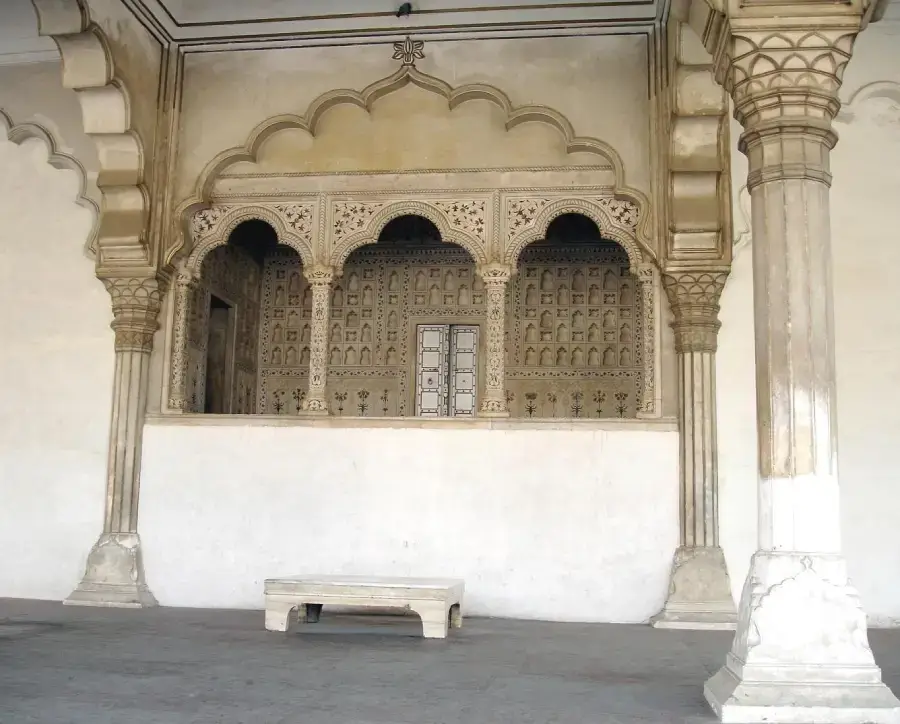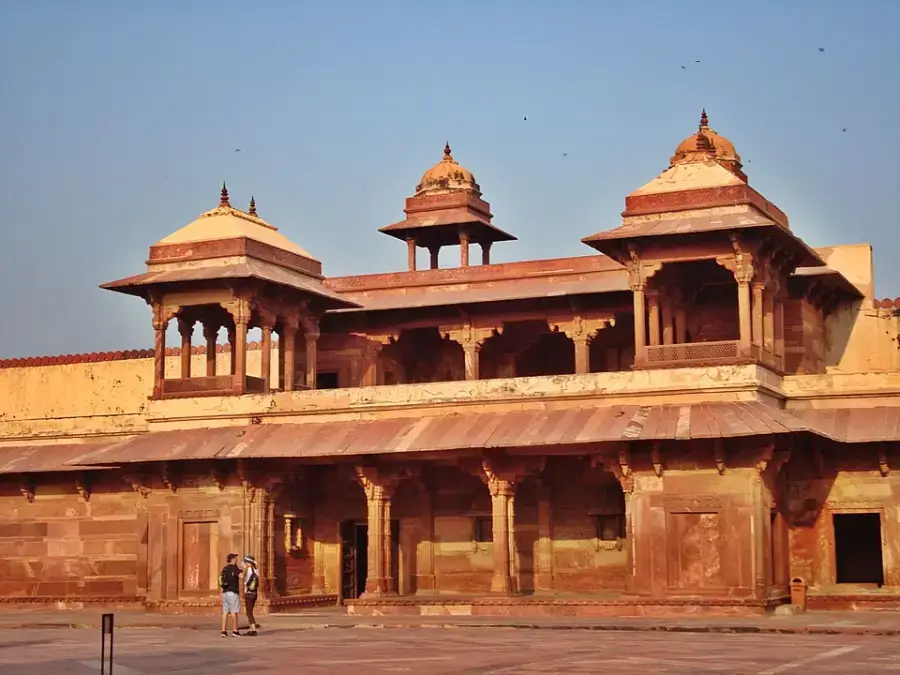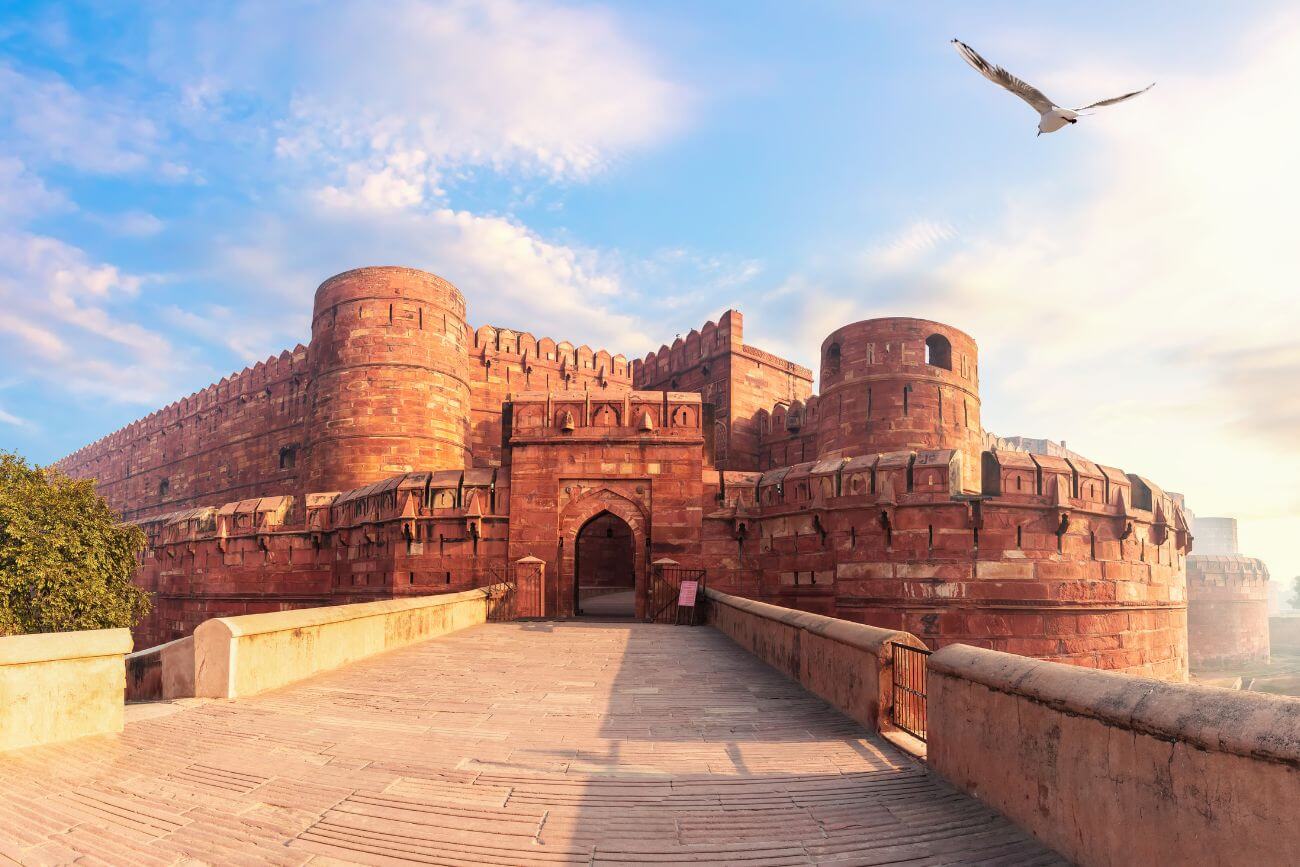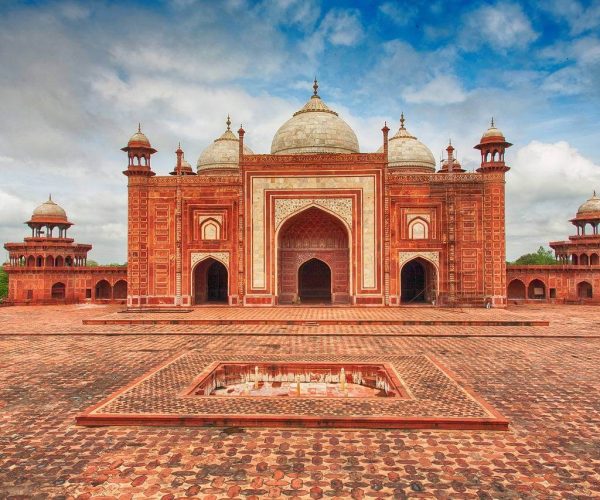On a tour to India, Agra ( the city of the Taj Mahal) will likely be on your itinerary. The city has three UNESCO World Heritage Sites and impressively, each one of them was built by the Mughals for diverse purposes.
The Mughal Empire was one of the most dominating forces in India’s history and much of its heritage, architectural beauty is still cherished vastly.
However, most of the Same Day Agra Tours do not cover Fatehpur Sikri on their itinerary since it is far from the city. It is generally covered on the Golden Triangle Tour when reaching Jaipur via Fatehpur Sikri.
At India Travel Plans, we won’t let injustice happen to you! We will make sure that you get the maximum of your time here in Agra.
Let us dive deep into the three UNESCO World Heritage Sites in Agra and ways you can plan it effectively and efficiently.
UNESCO World Heritage Sites in Agra
Taj Mahal
The Taj Mahal is a white marble mausoleum situated on the river banks of Yamuna in Agra city. The Makrana White marble monument dates back to the 17th century when the Mughal Empire ruled in Northern India.
Shah Jahan, the Mughal Emperor commissioned the construction of this beautiful architectural wonder in the memory of his wife Mumtaz Mahal. She was very dear to him and lost his life while delivering a baby.
Later, at the demise of Shah Jahan, he was also buried next to the grave of Mumtaz Mahal in the same Taj Mahal complex. The construction of the Taj Mahal is a story of love where the demise of one led to the construction of such an architectural wonder that the world allures its beauty to date.
The Taj Mahal is a symbol of love and a wonder of the world indeed.
The architectural style of the Taj Mahal is Mughal Architecture and is the zenith of such architecture. Humayun Tomb in Delhi and Itimad-Ud-Daulah are other Mughal monuments that resemble the Taj Mahal but aren’t as symmetrical and beautiful as the Taj Mahal.
The Taj Mahal complex has beautiful lush-green gardens, grand entry gates, pillars, and other structures that are beautiful to the eyes and offer numerous picturesque frames to click.
Agra Fort

Agra Fort is a vast fort in Agra near the Taj Mahal. The massive fort is built with Red Sandstone and depicts the architectural beauty of the Mughal Architecture.
The vast complex houses numerous structures, complexes, prayer halls, and audience halls, all built with intricate marble carvings, marble inlay work on the walls, exquisite ceiling designs, and more. Agra Fort is the place to go if you are a connoisseur of architecture and fine arts.
The Fort has a history of different rulers but was majorly used by the Mughal Empire under the leadership of Akbar. The final construction of the fort was done by Akbar in 1573 and Mughal Emperor Humayun was also crowned at this fort. The Fort remained the imperial residence of the Mughals till 1638 before Delhi became the capital of the Dynasty.
Fatehpur Sikri

Fatehpur Sikri is another Mughal-era monument built on the outskirts of Agra. It is a walled town built at a significant elevation from the ground. In 1571, the Mughal Emperor chose to move his capital from Agra to Fatehpur Sikri, and hence, the construction of this massive walled town capital took place. Similar to the Agra Fort, the complex comprises large audience halls (Diwan-I-Aam, Diwan-I-Khas), verdant gardens, and prayer halls.
The Buland Darwaza at Fatehpur Sikri is a major highlight of the monuments and signifies the attention to detail in the construction of monuments. The complex also has the tomb of Sheikh Sa Salim Chisti and his family. He was a Sufi Saint and foretold the birth of a child to Akbar. He was named Jahangir and later became another Mughal Emperor.
Significance of the Mughal Empire in India’s Geography
The Mughal Empire is a significant part of India’s history and architectural heritage. It ranged from Afghanistan in the North West to Kashmir in the North and Bangladesh in the East. Further, it expanded up to the Deccan Plateau in the South, covering the entire countries of Afghanistan, Pakistan, Bangladesh, and a major part of India.
Babur was the first Mughal Emperor of the Mughal Dynasty in the Indian subcontinent. He was born in Andijan (in Uzbekistan) and later spread his empire in Kabul and other parts of the Indian subcontinent. He is believed to be a descendant of Chengis Khan, a Mongol Emperor. The Mughal Empire thrived till the reign of Aurangzeb and after 1857, collapsed.
During the rulings of the Mughal Empire in India, Agra remained its capital three times – (1526–1530), (1560–1571), (1598–1648). During the rulings, there were enormous cultural, social, and economic shifts in the society. In the same vein, there was enormous construction of monuments, imperial forts, mausoleums, mosques, and more.
Today, the monuments and forts are popular tourist places and UNESCO World Heritage Sites and the mosques are places of worship for the followers of Islam.
How to plan your Agra Tour with all UNESCO World Heritage Sites?
A tour of a place is more meaningful when you explore all its famous landmarks and underrated places. Hence, we have arranged some exquisite tours to Agra that cover all the UNESCO World Heritage Sites in the city –
Same Day Agra Tour from Delhi (By Train/Car)
The Same Day Agra Tour is a one-day trip which starts from New Delhi. Agra City does not have an airport. Hence, post your arrival at Delhi Airport, you will get airport pickup and will be transferred to Agra via Yamuna Expressway.
On the Same Day tour, you will visit the prominent tourist attractions in the city – Taj Mahal, Agra Fort, and Itimad-Ud-Daulah. You can choose Fatehpur Sikri in place of Itimad-Ud-Daulah.
For more details on this tour, check these tour itineraries –
Golden Triangle Tour
Golden Triangle Tours are tours of three Indian cities – Delhi, Agra, and Jaipur. Each of these cities is an iconic tourist place and carries a significant weight in the history of India.
This tour generally lasts 3-4 days and can be extended up to a few more days at your convenience. Golden Triangle Tours are more comprehensive tours and give you a better travel experience of the Indian cities.
On a Golden Triangle Tour, you will get to cover all three UNESCO World Heritage Sites in the city and other destinations.
Other historical monuments in Agra
- Itimad-Ud-Daulah
- Sikandra
- Mariam Tomb
Other Mughal UNESCO World Heritage Sites
- Red Fort, Old Delhi, India
- Humayun’s Tomb, Old Delhi, India
- Lahore Fort, Lahore, Pakistan
- Shalamar Gardens, Lahore, Pakistan
Conclusion
The three UNESCO World Heritage Sites in Agra are of great significance and you must keep them in your itinerary.




